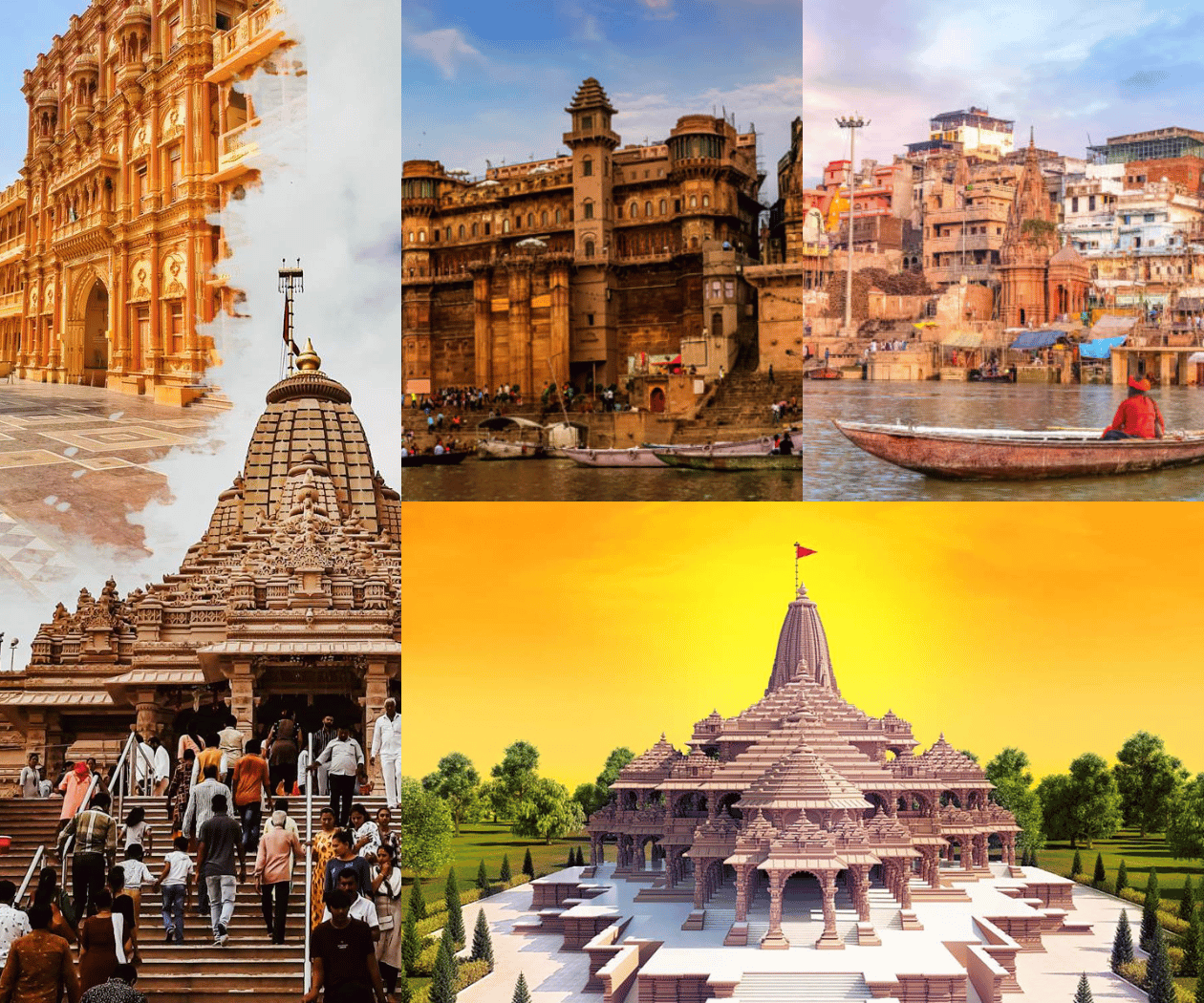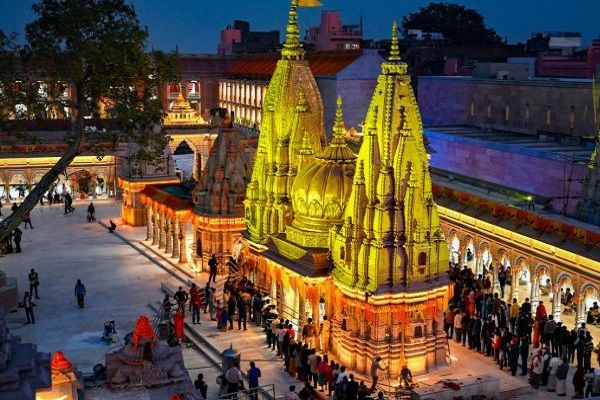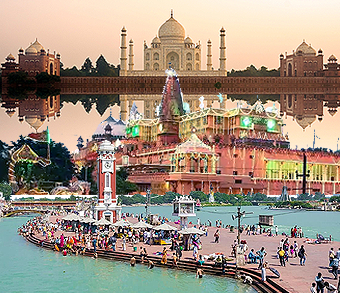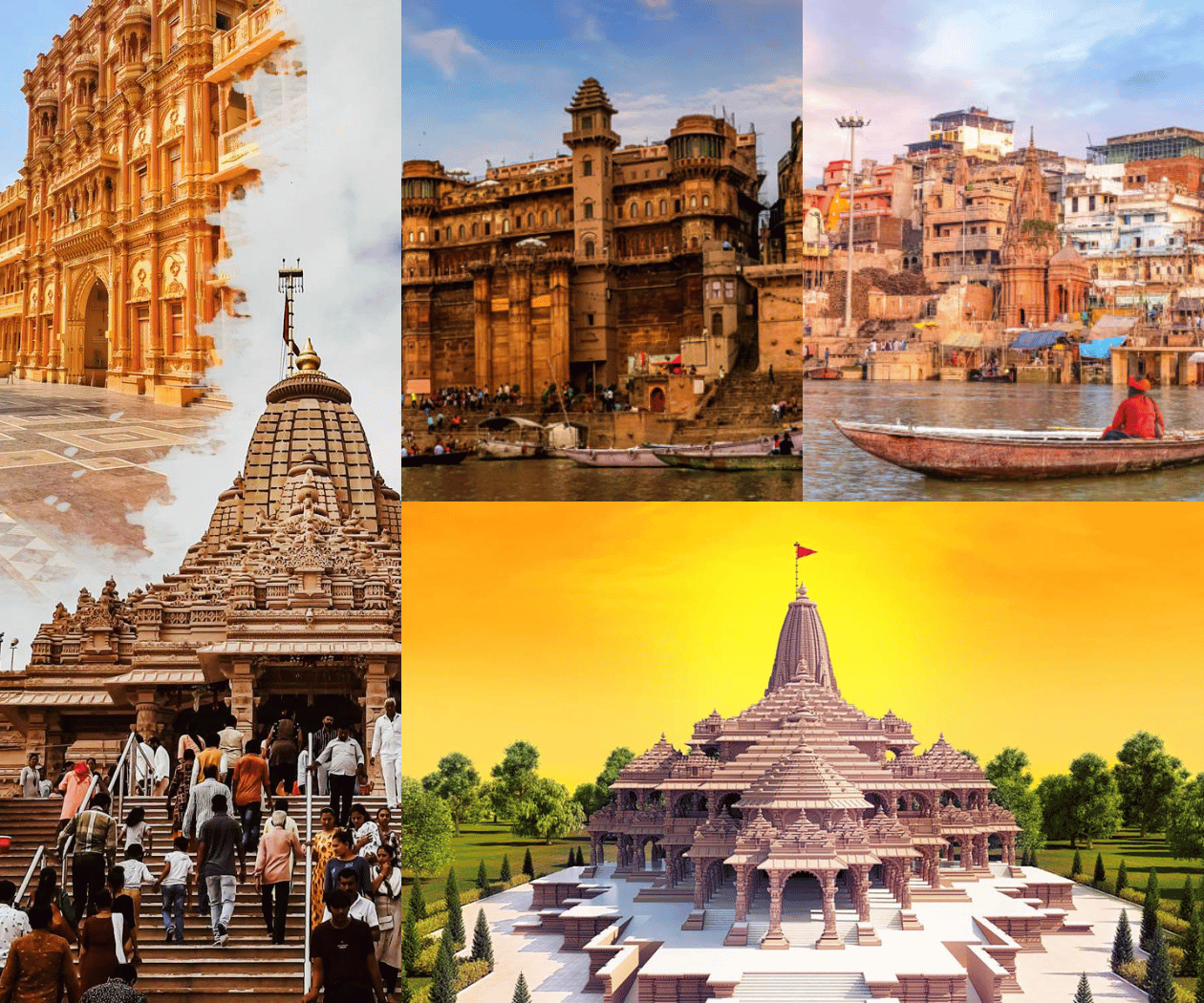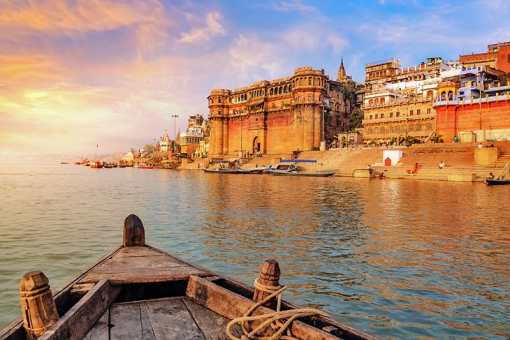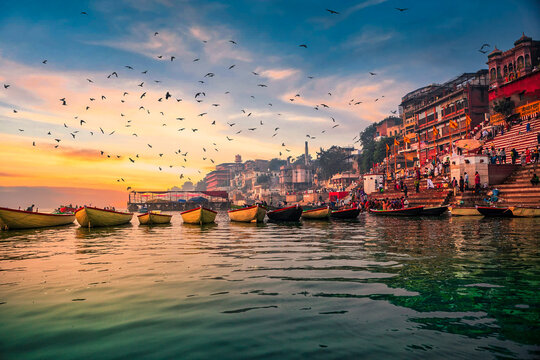Call us for details
8888789880
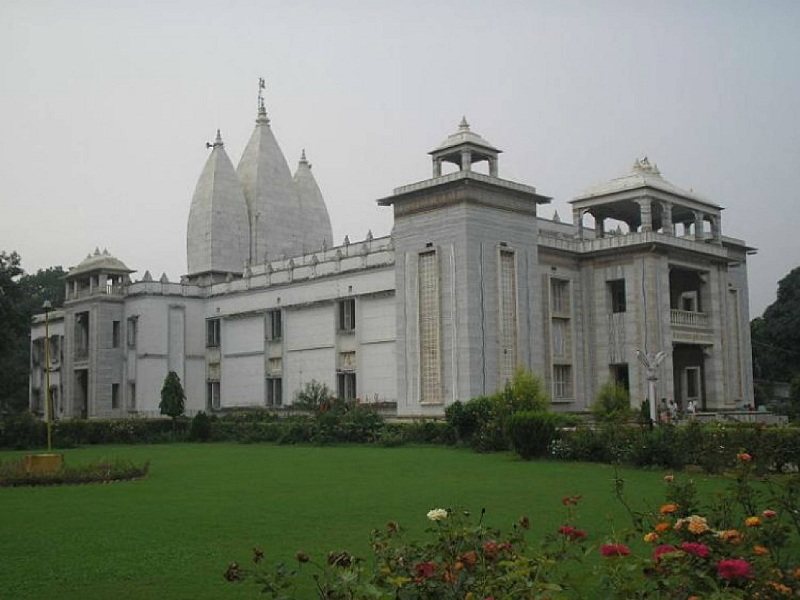
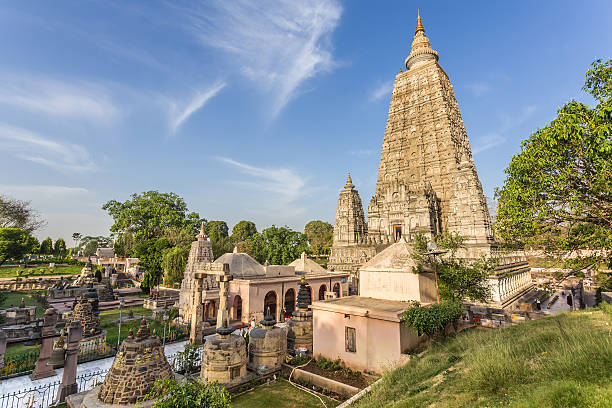
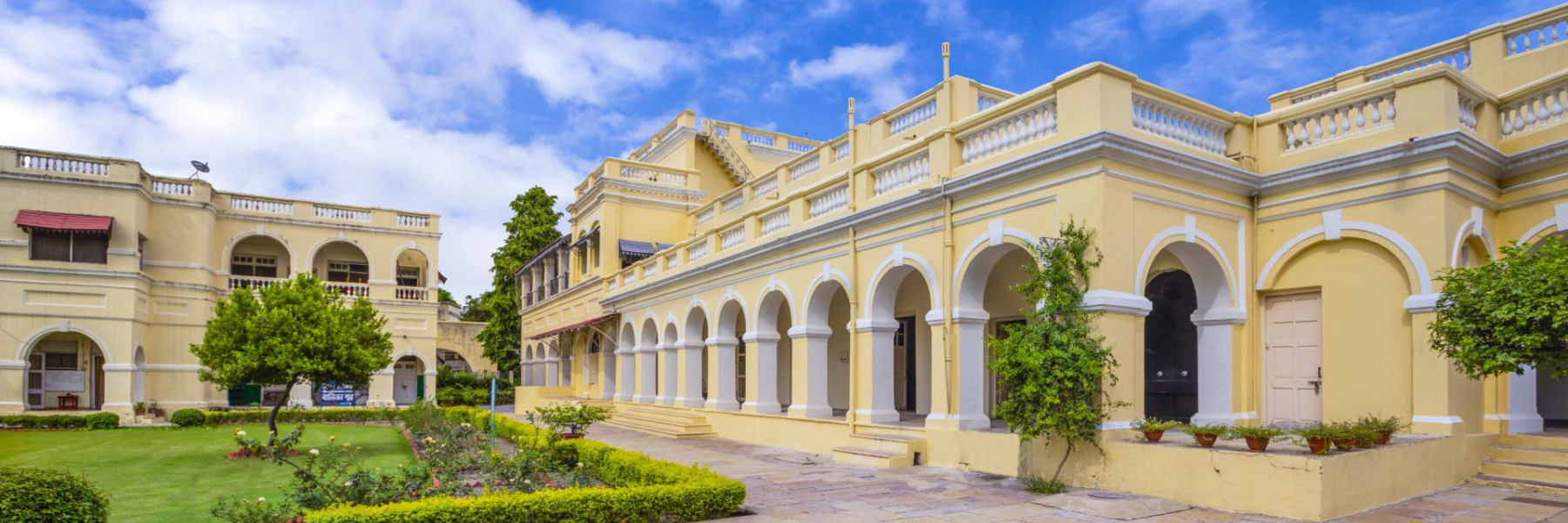
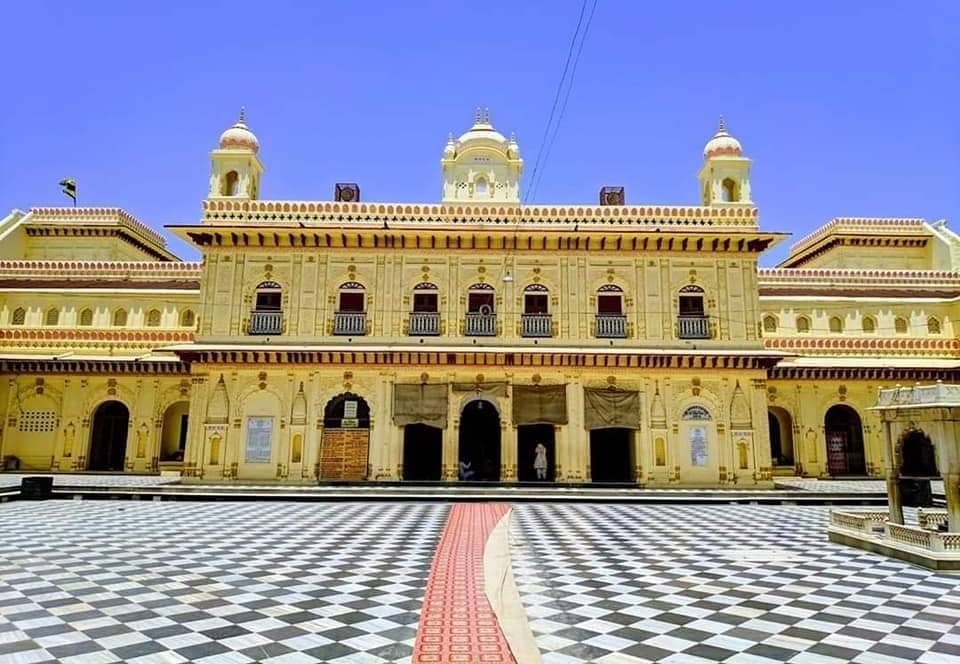
Varanasi Gaya Prayagaraj Ayodhya Naimisharanya is our tour itinerary for traveler looking for best tour package for Varanasi Bodhgaya Gaya Prayagaraj Ayodhya with Naimisharanya. In this package our tour start from Varanasi where you stay for two nights in the ancient city of lord Shiva and you make a same day trip from Varanasi to Gaya and Bodhgaya and in the evening return back to Varanasi .next day you will be travelling to Prayagraj also known as Allhabad where sangam is you will have deep experience in Sangam city you can take a holy dip and perform the rituals and continue to Ayodhya the birth place of Lord Rama .you will have one full day to see Ayodhya and in the evening you will be driving to Naimisharanya via Lucknow .next day you will have sightseeing of Naimisharanya and later on drop at Lucknow airport for onward joureny !
Highlights:
1. Kashi Viswnath Temple, Annapurna Devi temple, Vishalakshi temple.
2. Durga temple, Tulsi Manas temple, Sankat mochan temple.
3. Buddha Temple, Vishnupad Temple, Allepo Devi temple.
4. Ramjanmbhoomi, Hanuman Garhi, Sita Rasoi, Kanak Bhavan, Sugriv Bhavan, Dasrah mahal.
Meet and greet at airport / Railway station and transfer to pre booked Hotel assuatnce at check in at Hotel. After freshen up proceed to have a darshan of Kashi Viswnath (jyotriling temple ) if you wish to perform rudrabhishekam at the temple complex please let us know we can arrange accordingly , visit to Annapurna devi temple , Vishalakshi temple and in the evening take a boat ride in aarti ceremony at Dasaswmedh ghat . Overnight at Hotel in Varanasi.
Kashi Vishwanath Temple:
Situated on the western bank of holy river Ganga in Varanasi, Kashi Vishwanath Temple is one of the 12 Jyotirlingas or temples dedicated to Lord Shiva. The main deity of Kashi Vishwanath Temple is Lord Shiva, also known as Vishwanatha or Vishweshwarar meaning 'the ruler of the universe'. The city of Varanasi, the cultural capital of India, is thus known as the city of Lord Shiva. The temple has 800 kg of gold plating on its tower.
In the olden times, on special festivals such as Shivaratri, the king of Kashi (Kashi Naresh) visited the temple for worship during which nobody else is allowed to enter the temple premises. Devotees were allowed after the king had concluded his prayers. The importance of the Kashi Vishwanath Temple also stems from the fact that it finds mentions in several Holy Scriptures of the Hindus. On the outside, the temple is adorned with intricate carvings that impart a divine quality to the facade. Other than that, the temple also houses several other small temples such as Kaalbhairav, Vishnu, Virupaksh Gauri, Vinayaka and Avimukteshwara.
Annapurna devi temple:
In her Gauri form, Parvati also lost her light skin. To regain her "Gauri"form, she pleaded with Shiva for assistance. In Kashi, Shiva requested that she give Anna (food). She assumed the appearance of Annapurna, the goddess of food, complete with a golden pot and ladle, and distributed food in Varanasi.
Sri Vishalakshi Temple:
The temple is dedicated to Goddess Vishalakshi Devi, the divine form of Goddess Sati. This temple is one among the 51 Shakti Peethas, and is part of the famous triad of temples- Kanchi Kamakshi, Madurai Meenakshi and Kashi Vishalakshi. According to mythology, the earring of the goddess Sati has fallen on this holy spot of Varanasi. Another version says that this is a Shakti Peetha only because one of the three eyes of Goddess Sati (Akshi) fell here. As the divine eye can perceive the entire universe, Mother here is called Vishalakshi, the vast-eyed.
Sri Vishalakshi Temple is built in South Indian architectural style. The Gopuram at the entrance has elaborate carvings and the temple has an array of Shivlingams. The four pillars in front of the main shrine are adorned with colorful sculptures. The Garbhagriha has two idols of Goddess Vishalakshi- a smaller black stone idol called Adi Vishalakshi, which is believed to be the original idol on left back side and another black stone image, adorned with flowers and jewels, installed at a later date. Adi Shankaracharya performed prayers to renew the powers of the temple and the goddess which had borne the brunt of several invasions. He also installed a Sri Yantram here.

In the morning pick up from Hotel and arrive at Assi ghat for the sunrise boat tour on the Ganges where you could see the Subah - E -Benares and morning rituals .if yuy wish to take a holy dip in to the Ganges you can .our boat ride covers most of the important ghat in Varanasi .post boat ride have a breakfast at Hotel and city tour of Varanasi which include Durga temple , Tulsi Manas temple , Sankat mochan temple , Banaras Hindu University and its temple , a silk weaving canter where you could learn how sari are woven and have a lunch at local restaurant (at your own) later on visit to Sarnath a Buddhist place where Lord Buddha gave his first sermon and visit include Buddha stupa , museum , deer park etc. and you can see light and sound show . Overnight at Hotel in Varanasi.
Durga Temple:
Durga Temple, nestled in the vibrant city of Varanasi, is a unique Hindu shrine dedicated to Goddess Durga built in the 18th century. Renowned for its vivid red colour and intricate architecture, the temple exudes a spiritual aura. Devotees visit to seek blessings, especially during the festive fervor of Navaratri, when the temple comes alive with religious celebrations. It houses an imposing idol of Goddess Durga and is one of the main temples in Varanasi.
Tulsi Manas Temple:
Constructed in 1964, this temple is dedicated to Lord Rama and is named after the saint poet Tulsi Das. It displays the Shikhara style of architecture and exhibits various inscriptions from the Ram Charit Manas on the walls of the temple. Various episodes of Ramayana have also been depicted on the upper storey of the temple in the form of carvings. The temple is a must visit during the months of Saawan (July - August) when it opens up a special display of puppets, related to Ramayana, and is a fun experience for everyone.
The Sankat Mochan Hanuman Temple:
The Sankat Mochan Hanuman Temple is situated by the River Assi and was built in the 1900s by the freedom fighter Pandit Madan Mohan Malviya. It is dedicated to Lord Rama and Hanuman. Varanasi is always related to Sankat Mochan Temple and is an essential part of this holy city. Every person visiting Varanasi visits this temple and pay their respects to Hanuman.
The laddoo offered at this temple is essentially famous among the locals.While visiting Sankat Mochan be aware of the monkeys who throng the temple premises and tend to steal away the prasad. However, they are totally harmless if you let them be on their own.

Today early morning drive to Bodhgaya a city in Bihar which is around five hours ride a Buddhist city where Lord Buddha elightend under the Bodhi tree and you could see gaint Buddha temple, Mahabodhi temple and many Buddhist monestries etc. and later on drive to Gaya where you could perform pind daan at Vishnupad temple, Falgu river, Mangala gauri temple and akshay vat temple and in the evening return back to Varanasi. Overnight at Hotel in Varanasi.
Buddha temple:
Sarnath Kashi is a famous Buddhist pilgrimage located about 10 km away from Kashi or Varanasi. Previously, there was a dense forest here, and deer hunting was popular. At that time, its name was 'Rishipattan Mrigaday'. After attaining enlightenment, Gautam Buddha gave his first sermon here.
Vishnupad temple:
As the name suggests, this temple was built as a dedication to Lord Vishnu and features a 40 cm long footprint of Lord Vishnu that is enclosed by a basin made of silver plates.
This footprint marks the act of Lord Vishnu subduing Gayasur by placing his feet on Gayasur's chest. Within the courtyard, there are other temples situated as well. One is dedicated to Lord Narasimha and another to Lord Shiva in the form of Phalgwisvara. This temple serves as a very significant place of worship for Hindus and is located in Gaya.

Today you will say good bye to the holy city of Varanasi after breakfast and your journey will continue to another important city also known as Tirth Raj the king of Pligrimage Prayagraj where three holy rivers meet together and form the confluence known as sangam. Upon arrival at Sangam take boat (direct payment) for sangam nose where the actual meeting point of the rivers are. You can take a holy dip and perform the rituals and later on city sight of Prayagarj which are Hanuman temple, Akshay vat temple, Fort, Allepo Devi temple and swaraj bhavan etc. and later on drive to Ayodhya. You will be arriving Ayodhaya late night .upon arrival check in to Hotel and Night stay in Ayodhya.
Allepo Devi temple:
This temple is peculiar in that there is no statue of any deity in this temple, rather, there is a wooden carriage or 'doli' which is worshipped. The origin of the name, Alopi (disappeared) Bagh lies in the Hindu belief that after the death of his wife Sati, the grieving Shiva travelled through skies with her dead body. Vishnu, to relieve him from this agony, threw his Chakra at the corpse, resulting in the fall of various parts of the body at various places in India, which were sanctified by the touch of the Goddess' body parts and hence were thereby deemed holy places for pilgrimage. The last part fell at this location thereby named as "Alopi" (where disappearance was concluded) and the holiest of all.
Another more credible version is found in oral history traditions narrated by old inhabitants of the area. It dates back to the time when the entire region was covered by dense forests infested with dreaded dacoits. A marriage procession happened to pass through the forest. Marriage processions, in medieval times, used to be the most vulnerable targets of robbers as they used to return loaded with gold and other riches received as gifts.
Swaraj Bhavan:
Swaraj Bhavan (formerly Anand Bhavan, meaning Abode of Bliss) is a large mansion located in Prayagraj, India, best known for once being owned by the Indian political leader Motilal Nehru and being home to the Nehru family until 1930.
It is managed by the 'Jawaharlal Nehru Memorial Fund', Delhiand functions as a museum open to the public. It has 42 rooms and a number of memorabilia including a charkha used by Mahatma Gandhi, photographs of the Indian freedom movement, personal belongings of the Nehru family and an underground room that is said to have been used occasionally for meetings.
Hanumanji Temple:
Close to the Prayagraj Fort is another attraction the Bade Hanumanji Temple. Also known as Lete Hanuman Temple, it enshrines a 20-ft-long idol of the deity, in a supine or reclining position. It is the only temple of its kind in the world where Lord Hanuman is worshipped in this position. Legend has it that after burning Lanka, as mentioned in the epic Ramayana, Lord Hanuman was tired and on the insistence of Goddess Sita, laid down to rest at the site where now stands the red-stone temple. What's interesting about this shrine is that the idol of the lord appears some six to seven ft under the ground in a pit bordered by red-orange pillars and fences.

In the morning after breakfast check out from Hotel and continue to city tour of Ayodhya which include Ramjanmbhoomi , Hanuman Garhi , Sita Rasoi , Kanak Bhavan , Sugriv Bhavan , Dasrah mahal etc. and drive to Naimisharanya . Upon arrival at Naimsharanaya check in to Hotel and Night stay.
Hanuman Garhi:
Naimisharanya is specked with various holy pilgrimage sites, and Hanuman Garhi is one of them. Dedicated to Lord Hanuman, it is a historical sacred site in Naimisharanya that holds a prosperous mythic importance.
The theme of this temple is a mythological event which portrays the emergence of Lord Hanuman from Patal Lok (underworld). In this event, he is accompanied by Lord Ram and his brother, Lord Laxmana, after winning against Ahiravana.
One of the major allures of this popular Hindu temple in Uttar Pradesh is the stone idol of Lord Hanuman carrying Lord Rama and Lakshman on his shoulder.
Hanuman Garhi is often inferred to as Dakshineshwar Temple as the presiding God of the temple faces the south (dakshin) direction. Besides its sacred importance, the temple furthermore attracts a lot of visitors because of the serene aura surrounding it.
Kanak Bhawan:
Kanak Bhawan is to the north-east of Ram Janam Bhumi, Ramkot, in Ayodhya. Kanak Bhawan is one of the finest and famous temples in Ayodhya and is a must visit. It is believed that this Bhawan was gifted to Devi Sita by Kaikei immediately after her marriage to Lord Ram. This is private palace of Devi Sita and Lord Rama. Vikramaditya got it renovated. Later it was rebuilt/renovated by Vrish Bhanu Kunwari which exists even today. The main idols installed in the garbhgrih (sanctum), are of Lord Ram and Devi Sita.
Dashrath Bhawan:
Dashrath Bhawan is located right in the heart of Ayodhya. It is thought to have been built in the same location as the original palace of the King, Lord Ram’s father. Lord Ram and his siblings spent their childhood and adolescence in this region. The Bhavan contains a shrine with Shri Ram, Lakshman, and Sita idols. The temple is accessible by a large and colourful entrance. When you visit the temple, you will be swept up in religious fervour.
Sadhus and saints dressed in orange robes continue to recite the dohas and chuapais from the Ramayana and other scriptures, accompanied by musicians. Despite the fact that the Bhavan is much smaller than its original equivalent, where King Dasrath may have lived, it attracts swarms of believers who travel here to witness the spot where Rama was born and spent his formative years.

In the morning post breakfast check out from Hotel and proceed to sightseeing of Naimisharanaya including Tirth Chakra, Hanuman Gaddi , Vyas Gaddi , Lalita Devi temple etc. and later on drive to Lucknow airport /Railway sation for onward journey and here is the end of our services !!
Lalita Devi Temple:
Lalita Devi Temple is must-see when seeing the holy sites associated with Uttar Pradesh tourism.It is one of the shakti peethas and is dedicated to Lalita Devi,The presiding deity of Naimisharanya,making it a highly respected Hindu shrine in Uttar Pradesh.Devotees are quite impressed by Temple's Architecture.With a balanced cantilever, it is exquisitly constructed. Additionally,there are sttues of elephants on either side of the entrance to this well-known pilgrimage destination in naimisharanya.
There are several legends related to the Lalita Devi shrine. One of them claimed that after completing the Daksha Yajna, Goddess Sati sprang into the flames while standing in the Yogi Agni position.
Tirth Chakra:
Chakratirtha is one of the most popular Hindu pilgrimage sites in Naimisharanya. According to a mythological tale, it is the same place where the wheel (Chakra) of Lord Brahma made an opening in the earth, thereby resulting in the creation of an enormous body of water. A holy dip in the water of this pond is believed to sanctify one’s mind, body, and soul.
| Hotel Type | Hotel Name |
|---|---|
| DELUXE | Taraji Resort/Similars |
| PREMIUM | The Ramayana Hotel, Ayodhya/Similars |
| STANDARD | Hotel The Ramay Palace/Similars |
| SUPER DELUXE | Clarks Inn Express Ayodhya/Similars |
| Hotel Type | Hotel Name |
|---|---|
| DELUXE | Royal Swiss Cottage-Villa& Cottages/Similar |
| PREMIUM | JP International Palace/Similars |
| STANDARD | Comfort Inn /Similar |
| SUPER DELUXE | The Vishwnath Palace/Similars |
| Hotel Type | Hotel Name |
|---|---|
| DELUXE | PEARL COURTYARD/Similars |
| PREMIUM | StayVista at Sukh/Similars |
| STANDARD | Shri Nilayam Kutir/Simlars |
| SUPER DELUXE | The Amayaa/Similars |
| Source | Destination | VehicleName | Price | VehicleType | Remarks | Units |
|---|---|---|---|---|---|---|
| Varanasi | Lucknow | SUV | 0 | SUV | - | 1 |
Do not hesitage to give us a call. We are an expert team and we are happy to talk to you.
